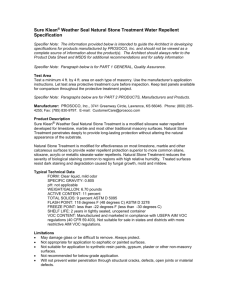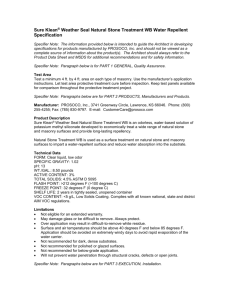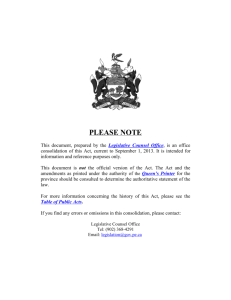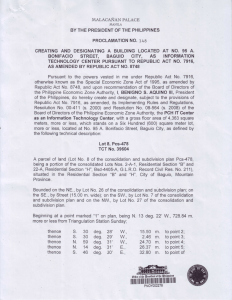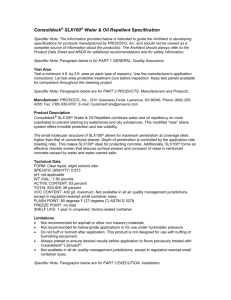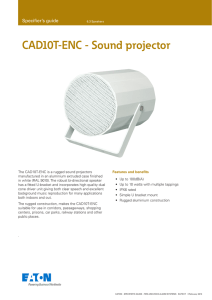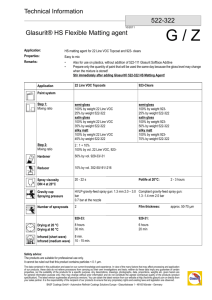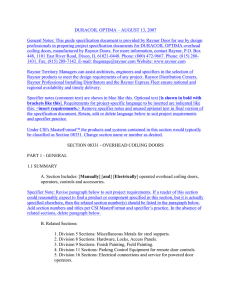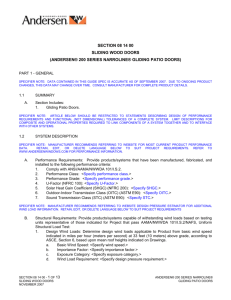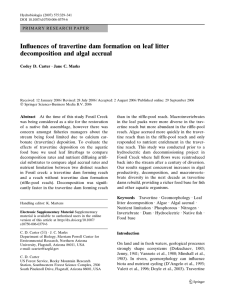Product Specification
advertisement
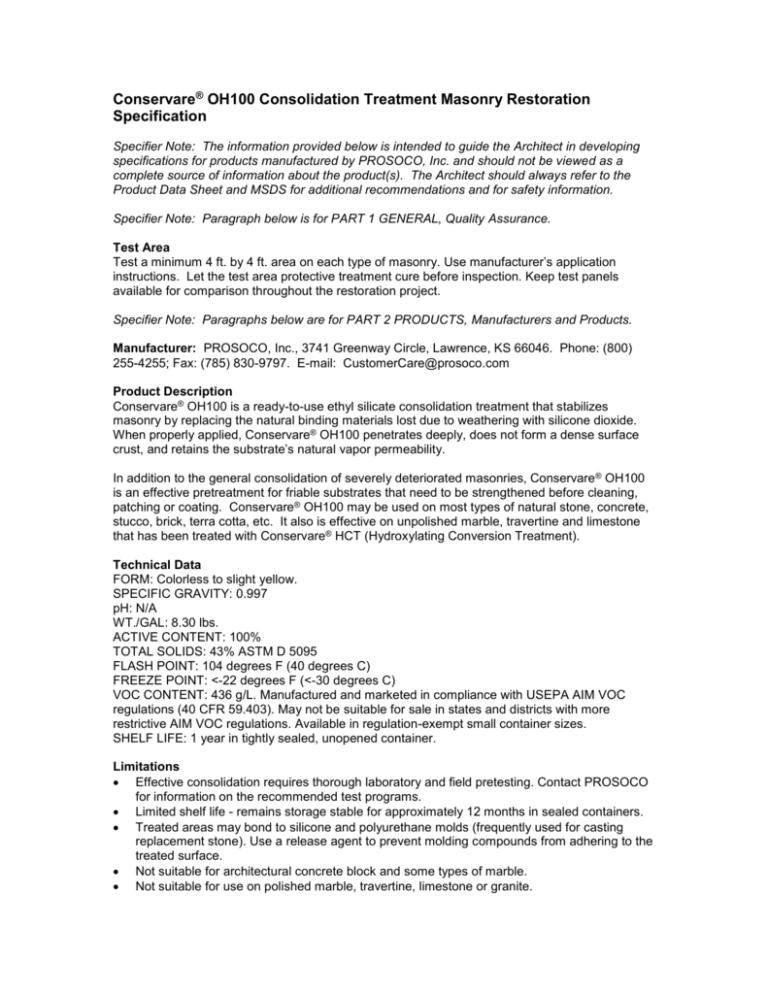
Conservare® OH100 Consolidation Treatment Masonry Restoration Specification Specifier Note: The information provided below is intended to guide the Architect in developing specifications for products manufactured by PROSOCO, Inc. and should not be viewed as a complete source of information about the product(s). The Architect should always refer to the Product Data Sheet and MSDS for additional recommendations and for safety information. Specifier Note: Paragraph below is for PART 1 GENERAL, Quality Assurance. Test Area Test a minimum 4 ft. by 4 ft. area on each type of masonry. Use manufacturer’s application instructions. Let the test area protective treatment cure before inspection. Keep test panels available for comparison throughout the restoration project. Specifier Note: Paragraphs below are for PART 2 PRODUCTS, Manufacturers and Products. Manufacturer: PROSOCO, Inc., 3741 Greenway Circle, Lawrence, KS 66046. Phone: (800) 255-4255; Fax: (785) 830-9797. E-mail: CustomerCare@prosoco.com Product Description Conservare® OH100 is a ready-to-use ethyl silicate consolidation treatment that stabilizes masonry by replacing the natural binding materials lost due to weathering with silicone dioxide. When properly applied, Conservare® OH100 penetrates deeply, does not form a dense surface crust, and retains the substrate’s natural vapor permeability. In addition to the general consolidation of severely deteriorated masonries, Conservare ® OH100 is an effective pretreatment for friable substrates that need to be strengthened before cleaning, patching or coating. Conservare® OH100 may be used on most types of natural stone, concrete, stucco, brick, terra cotta, etc. It also is effective on unpolished marble, travertine and limestone that has been treated with Conservare® HCT (Hydroxylating Conversion Treatment). Technical Data FORM: Colorless to slight yellow. SPECIFIC GRAVITY: 0.997 pH: N/A WT./GAL: 8.30 lbs. ACTIVE CONTENT: 100% TOTAL SOLIDS: 43% ASTM D 5095 FLASH POINT: 104 degrees F (40 degrees C) FREEZE POINT: <-22 degrees F (<-30 degrees C) VOC CONTENT: 436 g/L. Manufactured and marketed in compliance with USEPA AIM VOC regulations (40 CFR 59.403). May not be suitable for sale in states and districts with more restrictive AIM VOC regulations. Available in regulation-exempt small container sizes. SHELF LIFE: 1 year in tightly sealed, unopened container. Limitations Effective consolidation requires thorough laboratory and field pretesting. Contact PROSOCO for information on the recommended test programs. Limited shelf life - remains storage stable for approximately 12 months in sealed containers. Treated areas may bond to silicone and polyurethane molds (frequently used for casting replacement stone). Use a release agent to prevent molding compounds from adhering to the treated surface. Not suitable for architectural concrete block and some types of marble. Not suitable for use on polished marble, travertine, limestone or granite. Specifier Note: Paragraphs below are for PART 3 EXECUTION, Installation. Application Before applying, read “Preparation” and “Safety Information” sections in the Manufacturer’s Product Data Sheet for OH100 Consolidation Treatment. Do not dilute or alter. Note: Apply by low-pressure spray, brush or dipping. Larger surfaces should be treated using low-pressure spray equipment, small areas with spray tanks. Mobile objects such as sculptures are best treated indoors by dipping or with the use of compresses. 1. Apply Conservare® OH100 in repeated applications referred to as “cycles.” A cycle consists of three successive saturating applications at 5-15 minute intervals. Typical treatments involve two or three cycles (6-9 separate applications). 2. Allow 20 to 60 minutes between cycles. Laboratory testing will determine the optimum delay between applications and between cycles. 3. Apply OH100 until excess material remains visible on the surface for 60 minutes following the last application. 4. Immediately flush excess surface materials using industrial grade MEK (methyl ethyl ketone) or mineral spirits. If a second treatment is necessary, allow two to three weeks curing time following first treatment. Cleanup tools and equipment immediately with mineral spirits, denatured alcohol or an equivalent cleaning solvent. Remove overspray and spills as soon as possible.

